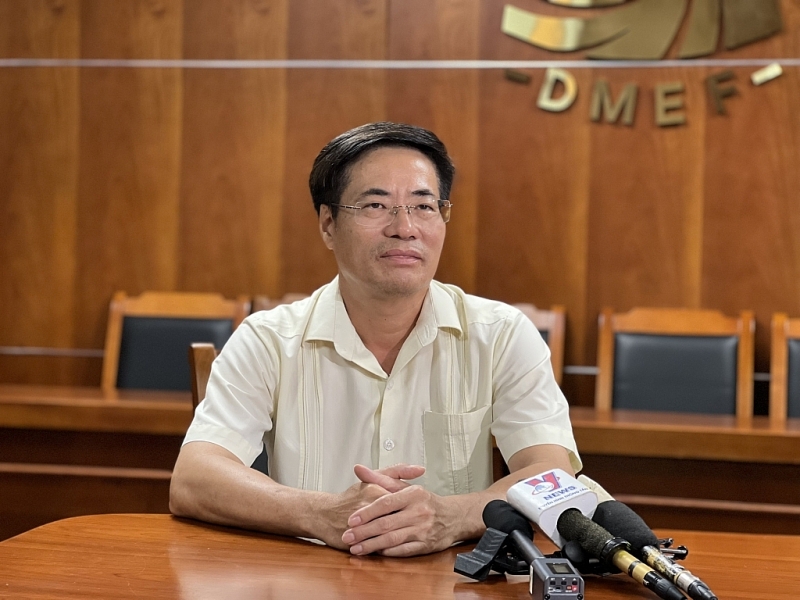The strength of the economy and fiscal policy help Vietnam to rise in credit rating
Moody's Investors Service upgraded the Government of Vietnam's long-term issuer and senior unsecured rating from Ba3 to Ba2 and changed the outlook from stable to positive. Mr Truong Hung Long, Director of the Department of Debt Management and External Finance (Ministry of Finance), conducted a talk with the press about this issue.
 |
|
Mr Truong Hung Long, Director of the Department of Debt Management and External Finance (Ministry of Finance) |
Dear sir, what is the meaning of Moody's upgrading the credit rating of Vietnam?
The upgrade of credit rating is the assessment of international investors or creditors on a nation's creditworthiness, whether it is good or bad. Therefore, the upgrade has the same meaning with better creditworthiness, so borrowing costs will be reduced, including the state and corporate sectors, when entering the market.
Moody's upgraded Vietnam's credit rating to Ba2, reflecting its assessment that Vietnam's growing economic strength and resilience to external macroeconomic shocks are better than other countries with the same credit rating, and policy effectiveness has been improved.
Furthermore, Moody's assessed that Vietnam's economy would continue to benefit from global supply chain restructuring, export diversification and the ability to attract foreign investment into the manufacturing and processing sector. The upgrade results also reflect a solid fiscal foundation supported by reasonably controlled borrowing costs, prudent fiscal policy management and improved liquidity of the Government debt portfolio.
This also showed the Government's tendency to gradually switch from foreign concessional loans to mobilizing domestic loans with low cost and longer term, which is appropriate.
How does this upgrade affect the attraction of investment capital shortly?
When the country's credit rating is higher, investors are more willing to invest capital in Vietnam with greater confidence because the possibility of capital loss is lower with a cheaper readiness cost.
Therefore, upgrading Vietnam's credit rating will help to better mobilize capital sources from outside the country into the country.
For the State sector, the mobilization of external capital will be cheaper, helping businesses to mobilize capital cheaper based on the Government's floor level, and investors will invest in more sectors of the economy.
According to Moody, what are Vietnam's notable highlights in this credit rating upgrade?
There are two important factors in Moody's upgrading Vietnam's rating from Ba3 to Ba2: economic strength and fiscal policy.
Economic strength is reflected in the ability to maintain growth rates and control inflation. The economy's resilience to Vietnam's external shocks in the recent period is also better than that of its peers.
The second factor is the foundation of fiscal policy. Vietnam has implemented a prudent fiscal policy resulting in reduced inflation and overspending. Public debt is strictly managed and controlled. Public debt restructuring is very effective. As a result, Vietnam's borrowing costs are low and gradually shifting from foreign to domestic. These are two basic factors for Moody's to evaluate and upgrade Vietnam's credit rating.
In the coming time, can you tell us what issues Vietnam needs to continue to focus on to be able to be upgraded and reach the Investment level?
There are two factors we will have to pay attention to and perform better: institutional strength and administration. Along with that are reforms of the banking sector and the SOE sector to reduce possible risks.
In terms of institutions and administration, institutional strength is reflected in the effectiveness and efficiency of policies and policy implementation. In contrast, administration power is reflected in the public and timely disclosure of management indicators.
In terms of reforming the banking sector and the SOE sector, we must improve the effectiveness of monetary policy implementation, increase the supervisory capacity of the banking sector and control asset quality. As for the SOE sector, the State's ownership ratio is still relatively large and needs to be controlled as well as minimized the provisional debt obligation from the SOE sector for the budget obligation.
Besides the two factors mentioned above, what solutions should Vietnam take to achieve the credit rating objective, sir?
From now to 2030, the Government of Vietnam will develop a scheme to reach the Investment ranking in 2030. I thought that with the background of the economy and the political determination of the Party, the State, and the Government, as well as with established steps, with persistent determination, we would achieve the goal of ranking to "Investment" by 2030.
And when we reach the level of investment, investors will trust us enough to repay the debt. With Moody's criteria, we still have two more levels while S&P Global Ratings (S&P) S has 1 level and Fitch Ratings has two levels.
I believed that under the direction of the Party and the Government, the whole political system would be determined to achieve the set goals. The Ministry of Finance will continue to coordinate with Moody's, other credit rating agencies, and other international organizations to continue to have a complete and up-to-date assessment of Vietnam's credit profile.
Thank you!








